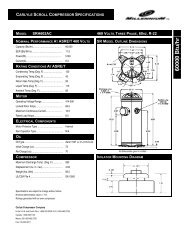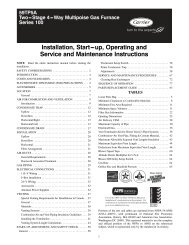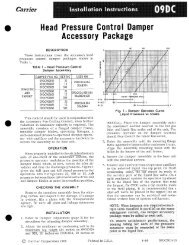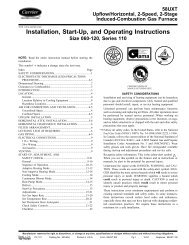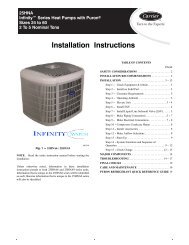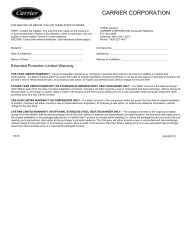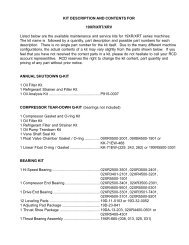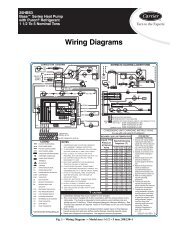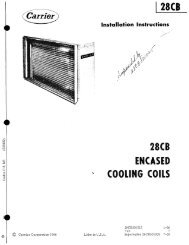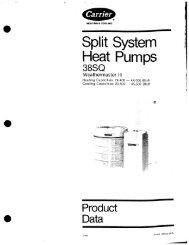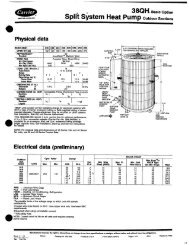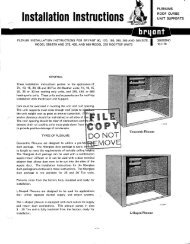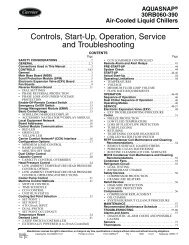SERVICE BULLETIN - Carrier
SERVICE BULLETIN - Carrier
SERVICE BULLETIN - Carrier
You also want an ePaper? Increase the reach of your titles
YUMPU automatically turns print PDFs into web optimized ePapers that Google loves.
REPLACEMENT COMPONENTS DIVISION<strong>SERVICE</strong> <strong>BULLETIN</strong><strong>BULLETIN</strong> NUMBER: C9914Page: 11 of 14How long can the charge be left in the machine without any attention?No more than a day. Here’s why:A contact seal consists of two EXTREMELY flat polished surfaces that are pressed againstone another. Since one has to move with respect to the other they are actually separated bya film of oil. You can look at the seal surface as a very small hole that is filled with oil. Oilbeing thick, it cannot flow through the hole more than a drip at a time. Refrigerant is anextremely small molecule and refrigerant gas could flow rapidly through the seal if oil was notin the way. Thus, oil will slowly leave the seal and as soon as part of the seal surface isuncovered refrigerant will escape.The length of time it will take for this to happen can vary greatly. A low pressure machine witha small surface can sit for weeks. With high pressure refrigerant the force trying to push theoil reserve through the seal is much greater. Larger shaft diameters resulting in larger sealcircumferences will also reduce the amount of time that a seal will hold after the oil supply isstopped. Although the seal could hold for several days, it is foolish to risk leaving the chargeunattended. Run the oil pump daily and visually monitor the seal. Better yet, pump themachine down to zero psig (zero kPa) if it will be idle for several weeks.How do I know if a seal must be repaired? Ask yourself these questions:Does the seal drip oil during shutdown periods at a rate greater than one drop every 10-15minutes?Whatever the shutdown drip rate, will the seal prevent refrigerant from escaping for at least 24hours?Does oil escape from the seal during operation at a rate great enough that some oil leaks outof the seal labyrinth instead of flowing to the seal oil return chamber?Is the seal drip rate increasing daily or weekly or is it holding steady?Now that you have asked those questions consider these statements.During run-in at the factory a seal must hold to a specification of 50-75 drops/min. dependingon the seal and when the specs were written. The oil sump is at atmospheric pressure andthe parts are all new and (we hope) perfect. You certainly don’t have these conditions when aseal is running.An FA 57-59 heat exchanger combination contains roughly 50 lbs. of R-22 when at a 20"vacuum level. A seal dripping 70 drops/min running 10 hrs/day 260 days/yr. will emit roughly



